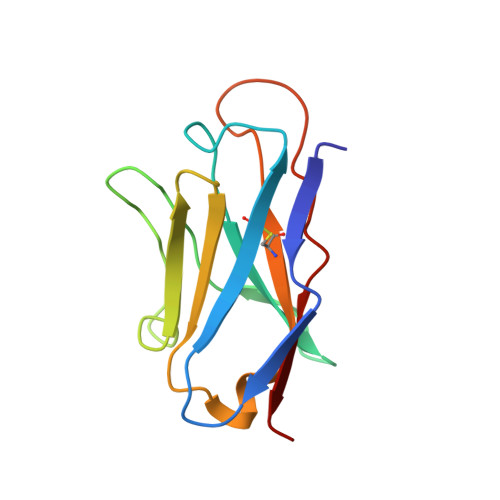Structure and Kinetics of a Transient Antibody Binding Intermediate Reveal a Kinetic Discrimination Mechanism in Antigen Recognition
James, L.C., Tawfik, D.S.(2005) Proc Natl Acad Sci U S A 102: 12730
- PubMed: 16129832
- DOI: https://doi.org/10.1073/pnas.0500909102
- Primary Citation of Related Structures:
2BJM - PubMed Abstract:
Induced fit is a predominant phenomenon in protein-ligand interactions, yet it is invariably attributed without establishing the existence, let alone the structure, of the initial, low-affinity encounter complex. We determined the crystal structure of the encounter complex on the pathway of ligand binding by IgE antibody SPE7. We show that this complex is formed by a wide range of ligands that initially bind with identical affinity. Nonspecific ligands rapidly dissociate, whereupon the antibody isomerizes to a nonbinding isomer. Specific ligand complexes, however, slowly isomerize to give a high-affinity complex. This isomerization involves backbone and side-chain rearrangements of up to 14 A and the formation of specific hydrogen bonds. The postbinding conformational switch, combined with the prebinding isomerization to an energetically favorable nonbinding isomer, results in a "kinetic discrimination" mechanism that mediates selective binding, by a factor of >10(3), between highly related ligands that initially bind with the same affinity. This model may apply to proteins that bind multiple ligands in a specific manner or other proteins that, although capable of binding many ligands, are activated by only a few.
- Laboratory of Molecular Biology, Medical Research Council, Cambridge CB2 2HQ, United Kingdom. lcj@mrc-lmb.cam.ac.uk
Organizational Affiliation:


















